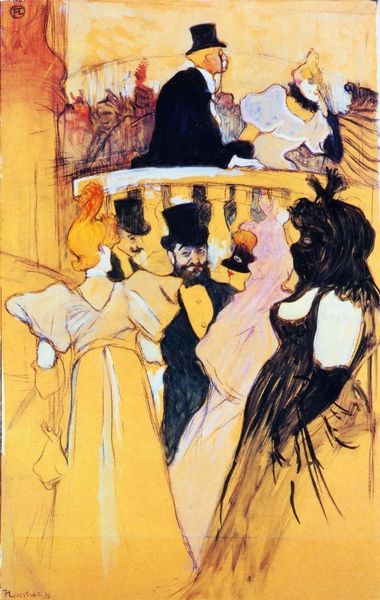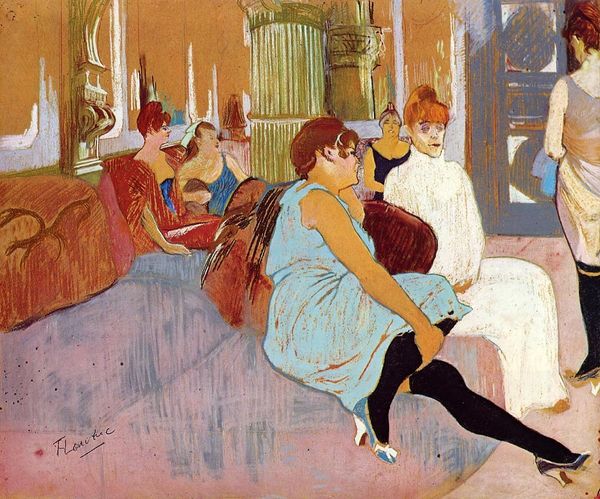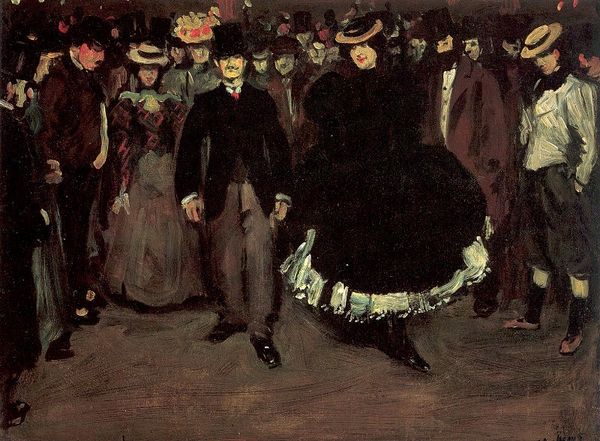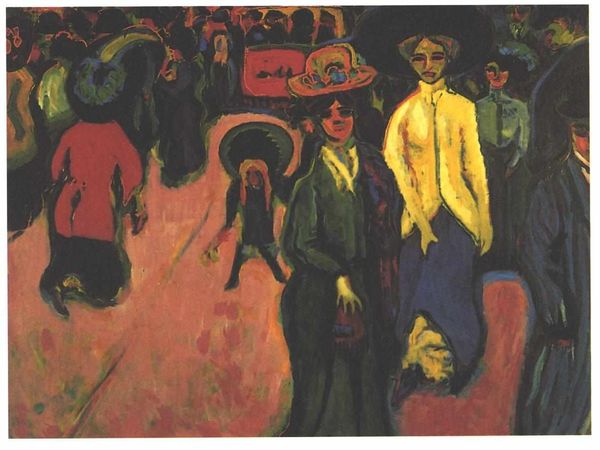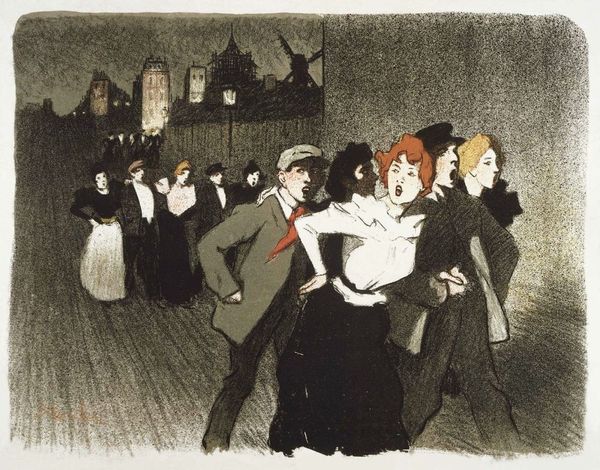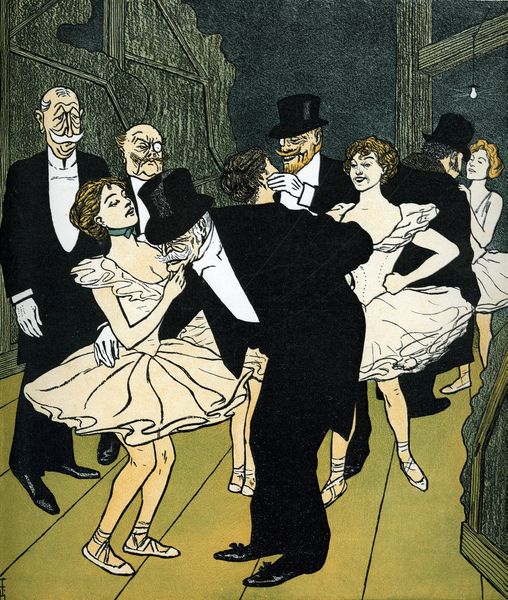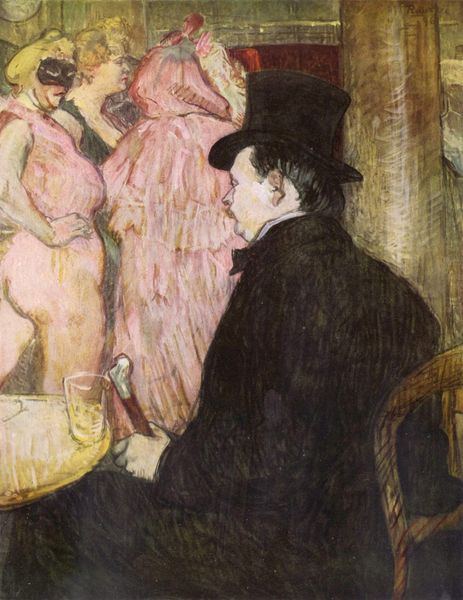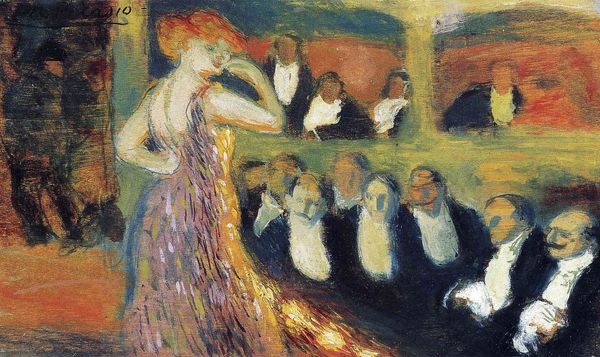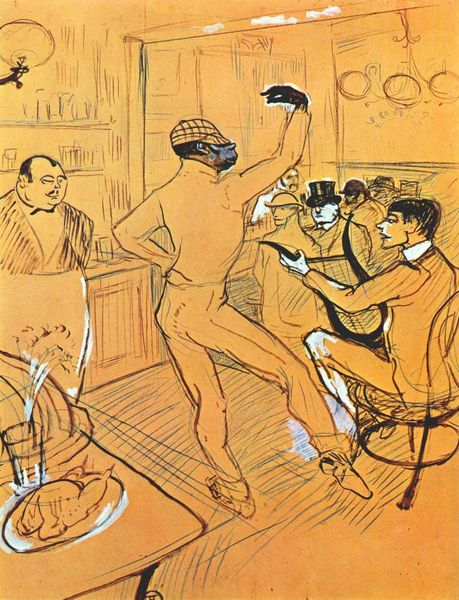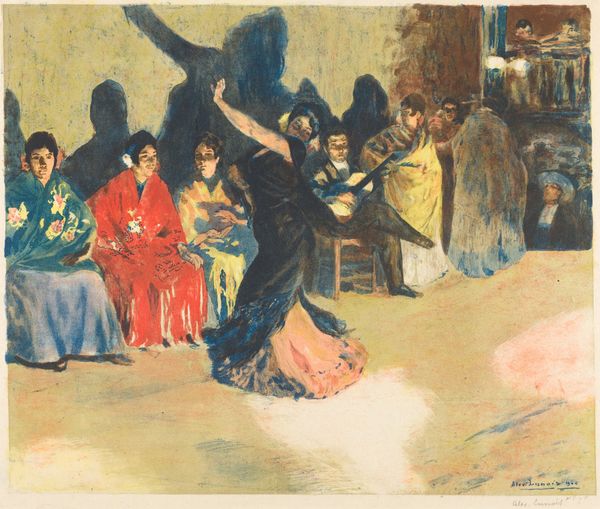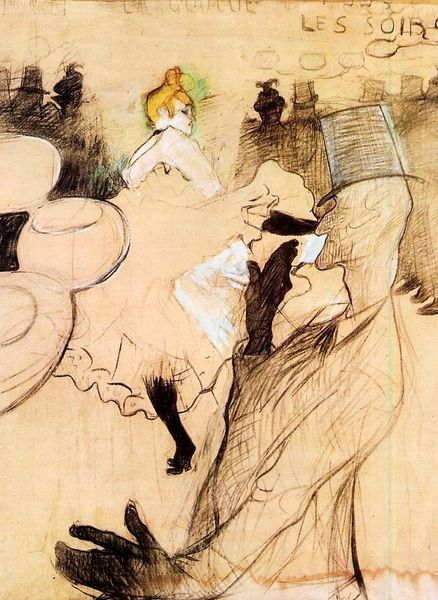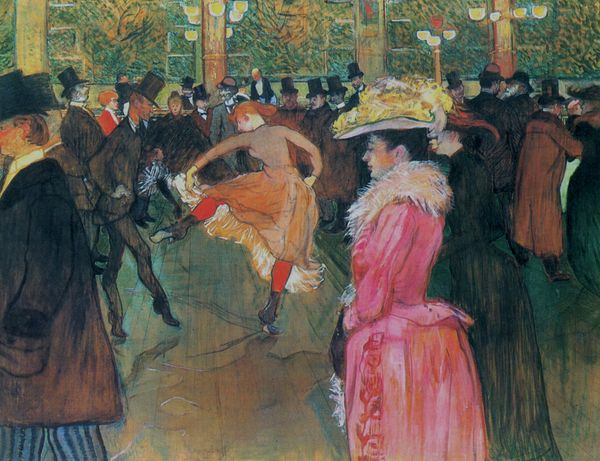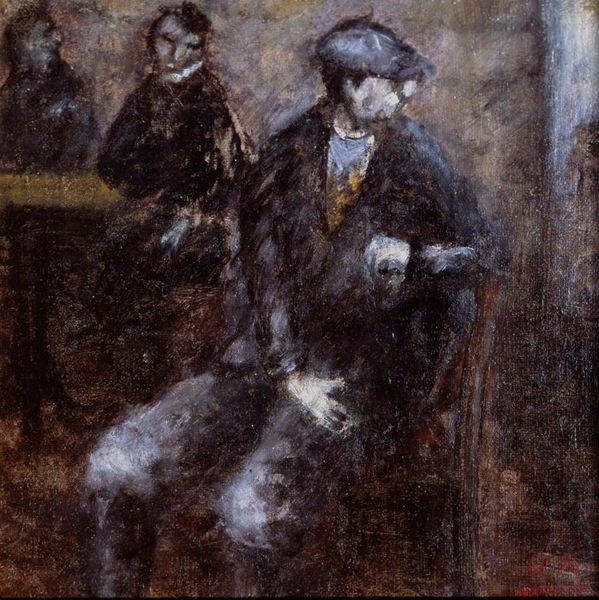
oil-paint
#
portrait
#
narrative-art
#
oil-paint
#
figuration
#
oil painting
#
expressionism
#
genre-painting
#
modernism
Copyright: Public domain US
Editor: So, this is Albert Bloch’s "The Dancer (Ragtime)" from 1911, an oil painting that immediately struck me as somewhat unsettling, like a distorted snapshot of a lively party. What’s your take on this piece? Curator: I see a critical lens trained on the means of production, both within the painting and extending outwards to Bloch's context. Let’s consider the application of oil paint itself. It's a fairly accessible medium, yet here it mimics the rapid, cheap reproduction of mass culture. Do you notice how the faces and figures are almost caricatures? Editor: Yes, the exaggerated features are hard to miss. It almost feels like a comment on social performance. Curator: Exactly! Think about the ragtime era: it was the dawn of mass entertainment and readily consumed trends. Bloch presents this ‘dancer’ and his audience almost like commodities, consumed within a cycle of production and performance. Even the piano player is laboring away! Editor: So, it's not just about depicting a scene, but about the labor and consumption inherent in the very act of creating and enjoying art and entertainment? Curator: Precisely. It’s an uncomfortable observation of the society he was embedded in, almost a critique of the relationship between artist, subject, and audience, reflecting how everything, including leisure, is tied to production. Editor: I never thought about it that way. Seeing it as a commentary on the industrialization of leisure really changes how I perceive the whole image. Curator: That's the key. It’s about expanding the boundaries of art criticism beyond just aesthetic appreciation and incorporating broader socio-economic perspectives. Editor: Well, thanks! I’ll definitely consider the means of artistic production and societal impact a lot more carefully going forward.
Comments
No comments
Be the first to comment and join the conversation on the ultimate creative platform.
